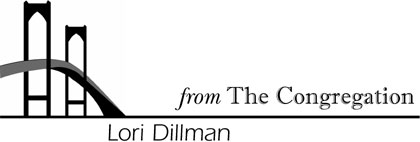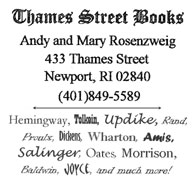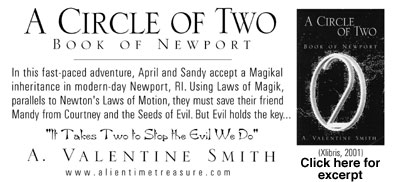




Prelude
In
1720, almost 100 years to the
day since the first Pilgrims set foot
on Plymouth Rock, a small group of
Connecticut settlers met in the home
of Nathaniel Haynes to discuss the
formation of a local church. The
wives could not be spared from the
never-ending household chores and
the care of the youngest settlers, so

the men carried back the word. During the long winter months, weekly Sunday services would be held at various centrally located farms in the community. In the spring and summer, weather permitting, the congregation would meet under the giant oak in Nathaniel’s east pasture.
The first service was held in December in Mr. Haynes’s front parlor, causing his wife to engage in a flurry of activity beforehand to make sure the room was suitable to receive the Lord, not to mention the wives and families of their fellow farmers. Elizabeth Haynes was delighted at the idea of company. Usually, once winter left its first snowfall, there was little likelihood of seeing another woman’s face until spring’s thaw.
Only the Paige, Read, Whitney, and Haynes families were present, but with their assorted children and a few grandparents, there were 20 worshippers altogether. The Andersons’ baby had the croup, so they could not attend, nor could the Tollivers, whose horse had gone lame two days before. Both families were remembered in prayer.
Nathaniel’s strong baritone led the group in several hymns, accompanied by Elizabeth on the out-of-tune piano brought across the ocean by her mother years ago. They had no hymnbooks, but they all knew the words by heart from family services that, until now, had been their only way of fulfilling their religious needs. Once in a while, a circuit preacher might happen by, but that was an unlikely event in such scattered homes.
Nathaniel’s sermon, which he had worked on for days, was listened to intently. Even the children, in awe of being allowed the luxury of a morning off from schooling and chores, sat still and good in their very best clothes, most of which had been specially made for this occasion. Elizabeth’s eyes were filled with pride as she watched her husband hold his audience so rapt.
She was almost disappointed when Helen Read volunteered her home for the next service, which would be Christmas Sunday, two days before the blessed day. She was sure that Aaron Read would not have the way with words that her husband did, but she thought it prudent not to entertain such prideful thoughts. It would certainly be nice to get out of her four-room farmhouse, spacious though it was by comparative standards. The Reads’ cabin had only one room. It could hold the group snuggly in front of the big stone fireplace but... there would be no piano.
By 1727, the congregation was established enough to have a name — The Greenfield Fellowship Church — and to begin thinking of constructing a church building. Nathaniel deeded acreage in his East meadow, and logs were cut in the spring. Each man gave what time he could spare to the project, so that it was nearly three years before the 172' x 24' structure was completed. To all, it was a labor of love. Its block-like appearance was relieved by the rise of a small, but definite, steeple, and the first coat of white paint rendered it beautiful in their eyes.
With mixed feelings, Elizabeth supervised the moving of her beloved piano into the church. She was proud to donate it but already missed the momentary release from a hard life that playing music always gave her. Still, she would continue to feel its keys every Sunday, and perhaps she’d find a few minutes for practice during her busy week.
The next challenge was to find a minister for their lovely, new church. Ministers were a scarce commodity, and larger and wealthier communities got first choice. Even though they now numbered 15 spiritually committed families, the financial offerings were sporadic and sparse. If there had been an early snowfall or a dry spring, no one had money for anything but his own family’s life necessities. But the sharing of the pulpit by the church members, while economical, left a lot to be desired in spiritual enlightenment.
Then, in 1730, God sent them Alexander Goodwin, a circuit preacher’s son who did not relish the travelling life for himself. With very little persuasion, he accepted the call of the Greenfield Fellowship Church. He stayed with the Haynes family until his own cabin was completed, moving into it immediately following his wedding to Marcia Haynes, the first official wedding under the new church roof.
Forty years passed before Alexander and Marcia went to meet the Lord they had so dedicatedly served. The reins of the church were then handed over to Rev. Jeremiah Goodwinter, the son of a preacher in neighboring Enterbury.
And so it went. The church had a life of its own now. None of the founders were alive to see it burn to the ground in 1840, but from the ashes rose a larger and stronger building, similar in style to its predecessor, but with an elevated podium for the preacher, Rev. Doolittle. There was even a stained glass window, the pieces of which had been carefully transported from a glassmakerís shop in Boston.
In time, Greenfield became able to support a Catholic church, and then a Lutheran. The Greenfield Fellowship Church continued to flourish, and in 1980, it stood in the exact center of town. Its majestic steeple had bell chimes now, and they sent forth music for all to hear on Sunday mornings.

Timshel Literature